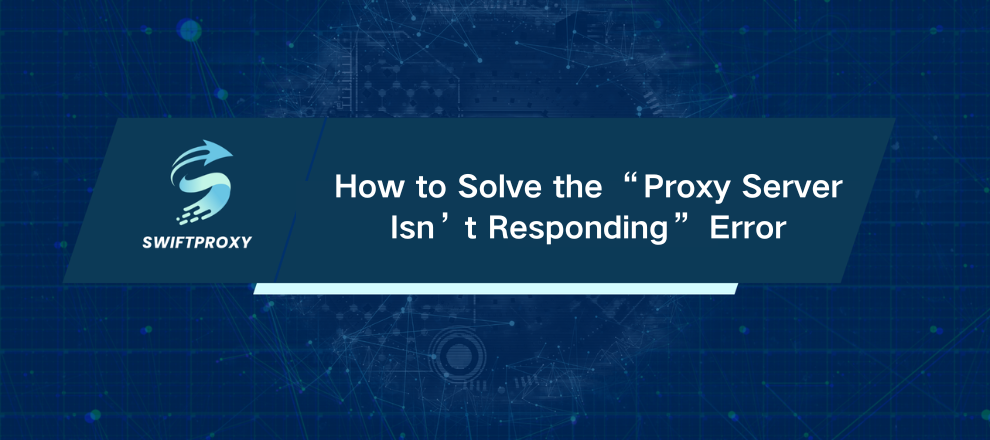How to Solve the "Proxy Server Isn't Responding" Error
Nothing kills productivity faster than a browser stuck on “waiting for response.” One minute you’re checking emails, the next minute… nothing. Pages freeze, connections stall, and frustration skyrockets. A misbehaving proxy server is often the culprit—and it can hit at the worst possible time. This guide walks you through seven concrete ways to fix it—no IT degree required. You’ll identify rogue apps, reset browsers, clean hidden settings, and reclaim a smooth, fast connection. Follow along and get your browser back on track.

Step 1: Uninstall Potentially Harmful Programs
Many proxy errors are caused by junk apps that sneak in silently—think toolbars, pop-ups, PC boosters, or mysterious "helpers." Some even install hidden residential proxies that route all your traffic through unknown IPs. Removing these apps often restores your connection immediately.
How to clean them:
Go to Settings → Apps (or Control Panel → Programs and Features on older Windows).
Look for anything suspicious—names like "Updater," "Optimiser," or "Helper" are usually red flags.
Click Uninstall for each.
Restart your computer to remove leftover files.
Step 2: Turn Off Proxy in System Settings
A misconfigured system proxy—sometimes set during VPN setup—can block all browser requests. Turning it off is the fastest way to check.
Windows 10/11:
Go to Settings → Network and Internet → Proxy
Enable Automatic proxy setup
Disable Manual proxy configuration
macOS:
Open System Settings → Network → Wi-Fi or Ethernet → Details/Advanced → Proxies
Uncheck HTTP and HTTPS
Apply changes and refresh a page
If pages load now, the proxy was the problem. If not, keep going.
Step 3: Revert Internet Explorer Settings
Even if you never use Internet Explorer, it can silently control system-wide network settings. Outdated add-ons or hidden proxy scripts can freeze apps with a "not responding" error.
Reset IE:
Open IE (type iexplore in Start if no icon appears)
Gear → Internet Options → Advanced → Reset
Check Delete personal settings and confirm
Restart Windows and test your connection
Step 4: Revert Google Chrome Settings
Chrome profiles can silently fail, sending all traffic through a broken proxy. Resetting the browser clears the problem without affecting essential data like bookmarks and passwords.
Steps:
Enter chrome://settings/reset in the address bar
Click Restore settings to their original defaults → Reset settings
Disable extensions, clear cache, and refresh
Step 5: Delete Harmful Chrome Extensions
Some free proxy extensions hijack connections silently. A quick audit protects your browser.
Enable Developer mode at chrome://extensions
Sort by last update and watch for:
Unknown publisher
"Needs access to all websites" with no clear benefit
High CPU, memory, or network spikes
Poor ratings or recent 1-star reviews
Disable or Remove suspicious extensions
Step 6: Revert Network Configuration Manually
If browser resets don’t help, your network stack may be corrupt. Fix it using Command Prompt (Admin):
ipconfig /flushdns
netsh winsock reset
Restart your PC and test the connection.
These commands clear cached DNS entries and reset Windows sockets hijacked by malware or rogue proxies.
Step 7: Remove Proxy Entries from Windows Registry
Old registry entries can force traffic through dead proxy servers, blocking all responses. Cleaning them is safe if you back up first.
Press Windows + R, type regedit
Navigate to:
HKEY_CURRENT_USER\Software\Microsoft\Windows\CurrentVersion\Internet Settings
Set ProxyEnable to 0
Delete any ProxyServer or ProxyOverride strings with unknown addresses
Export the registry for backup before making changes
Restart and test
Final Thoughts
A stalled proxy server can grind your day to a halt—but most issues are fixable in minutes. Remove suspicious apps, reset browsers, clean network settings, and check the registry. One or more of these steps should restore a fast, responsive connection.

















































